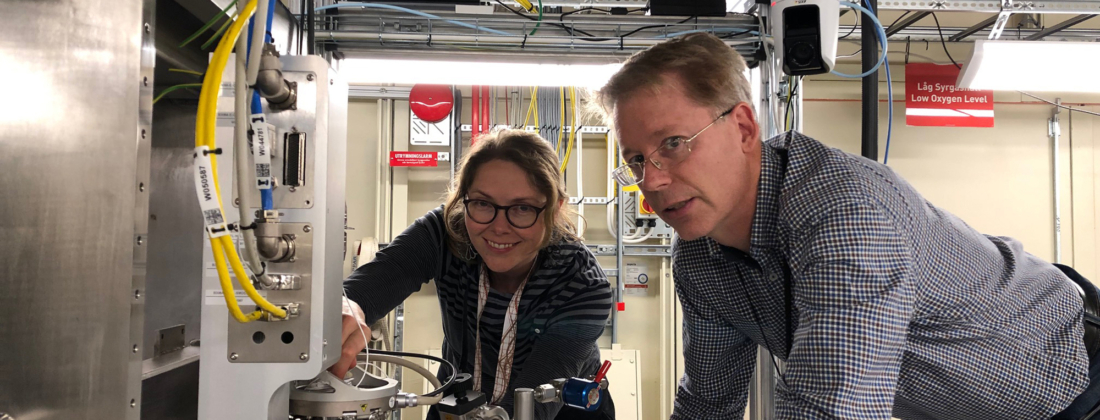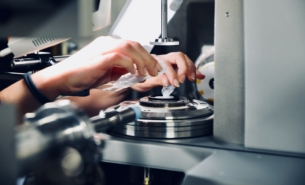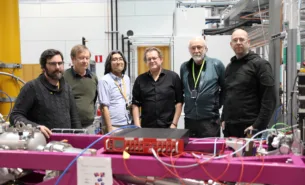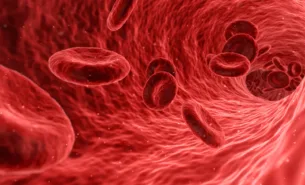In operation since September, Balder beamline has taken its first users to investigate MXenes, a class of nano-crystalline 2D-layered transition metal carbides, carbonitrides and nitrides. Researchers aim to learn more about their fascinating characteristics and how to exploit their material properties for new technologies.
A team from Linköping University in Sweden analyzed the chemical bonding of stacked nanosheet crystals of titanium carbide (Ti3C2Tx and Ti2CT) to gain knowledge about the heat-induced changes in bond distances and electronic structural properties. At Balder beamline, the samples were exposed to elevated temperatures upwards of 700˚C in a gas cell sample environment and measured with X-ray Absorption Near-Edge Spectroscopy (XANES) and Extended X-ray Absorption Fine Structure (EXAFS) spectroscopy.
“The Balder beamline is much more advanced than the previous I811 beamline at MAX II,” says Materials Science Professor Martin Magnuson, principal investigator of the study, and machine user at the former MAX lab. “Generally, the measurements can be made faster and the data acquisition software is fancier with more automated computer control options for the sample position and the beamline settings. At the start-up of beamline operation, there are of course still some details that can be improved. It is, however, clear that the energy resolution at the pre-peak of the Ti 1s-edge is much better than we ever have experienced previously.” In this work, Researcher Lars-Åke Näslund assisted with measurements and Post Doc Joseph Halim with sample preparation of the MXenes.
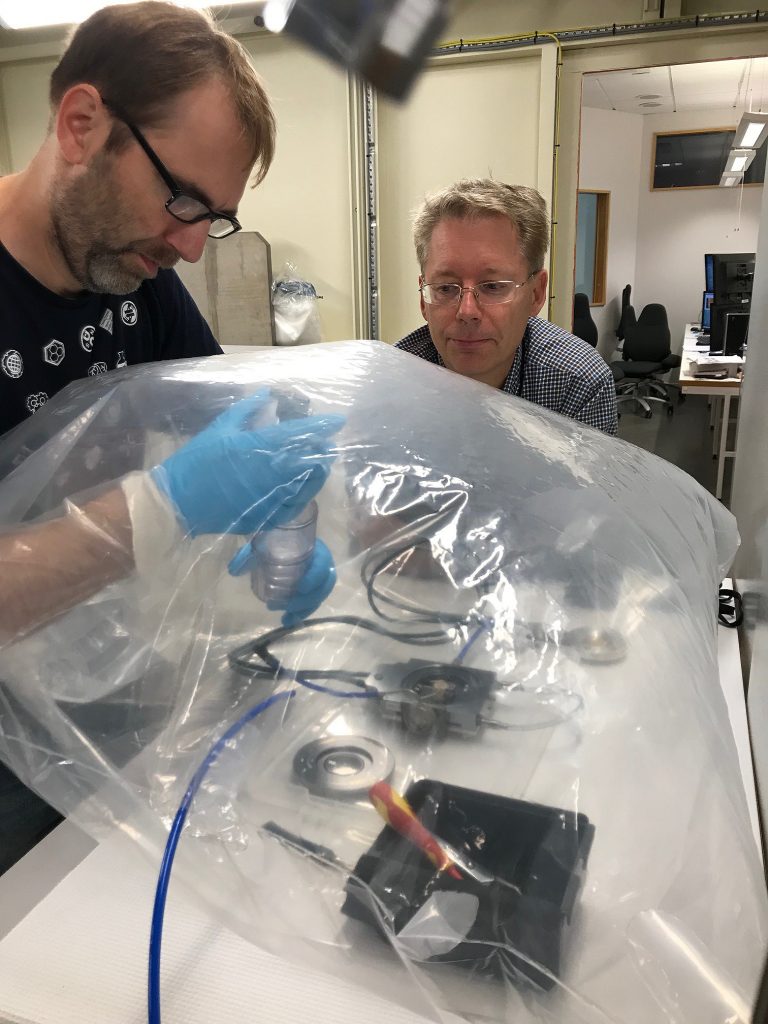
The beamline is designed for measurement with X-ray absorption spectroscopy and X-ray emission spectroscopy in the medium to hard X-ray range. It is beneficial for the study of atomic components, including local structure and electronic state, with samples in various states of order, from solids and liquids, to crystalline and colloid forms.
“The demands for user support on the different beamlines are very different,” explains MAX IV Beamline Scientist Kajsa Sigfridsson Clauss. “At Balder, we have faster turnover of user experiments of typically 1-3 days than, for example, at soft X-ray beamlines where users often stay for a week, while at MX beamlines there could be several user groups per day. After the beamline commissioning in spring, this was the first hard test of the beamline for normal user operation. Even though this wasn’t the easiest of experiments to begin with, it was successful, I think.”
MXenes were only recently discovered. Experiments in 2011 at Drexel University in the United States revealed that treating a 3D-structured MAX crystal with hydrofluoric acid to remove the aluminium resulted in 2D titanium carbide nanosheets. Their properties were unique: strong and brittle like ceramics, yet good conductors of heat and electricity like metals. They could be synthesized with different termination species that influence transport properties such as conductivity. And so, more versatile than a more well-known, purely carbon-based 2D material, graphene.
“The advantage of MXenes over graphene is the possibility of fine-tuning the properties through the selection of transition metal, mixture of carbides or nitrides, and modification of the termination groups,” says Magnuson. It has been suggested that many undiscovered combinations may be possible. The key is to find the stable phases.
Potential applications of MXenes range widely, for example, for electrodes in Lithium-ion batteries, water desalination and wastewater treatment, highly sensitive gas sensors, carbon monoxide capture materials to reduce climate emissions, photonic diodes, power-efficient transistors, and superconductive and magnetic materials.
Next steps for the Linköping team involve data treatment using different structural models, and further, conducting new experiments with substitution of the original termination groups. “When the model fitting of the XANES and EXAFS data analysis is finished, we will be able to reveal more significant insights in the bond lengths, oxidation states, charge transfer and how different termination species change adsorption sites at different temperatures,” says Magnuson. Understanding these parameters can bring researchers closer to controlling the specific conducting properties of the MXenes.
Related work
Chemical bonding in carbide MXene nanosheets
Local Bonding Environment in 2D Transition Metal Carbides Investigated by Balder Users
